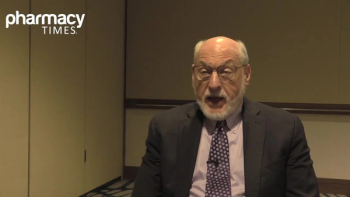
Similar Response Rates in Endocrine Therapy with CDK4/6 Inhibitor Compared With Chemotherapy for High-Risk Luminal B Breast Cancer
According to results from the CORALLEEN trial presented at the San Antonio Breast Cancer Symposium, neoadjuvant treatment with the cyclin-dependent-kinase (CDK) 4/6 inhibitor ribociclib (Kisqali) and the aromatase inhibitor letrozole (Femara) produced response rates similar to multi-agent chemotherapy in patients with high-risk luminal B breast cancer.
According to results from the CORALLEEN trial presented at the San Antonio Breast Cancer Symposium, neoadjuvant treatment with the cyclin-dependent-kinase (CDK) 4/6 inhibitor ribociclib (Kisqali) and the aromatase inhibitor letrozole (Femara) produced response rates similar to multi-agent chemotherapy in patients with high-risk luminal B breast cancer.
The CORALLEEN trial examined the efficacy of the CDK4/6 inhibitors ribociclib in combination with the aromatase inhibitor letrozole in patients with high-risk, luminal B, stage 1 and 3 operable breast cancer. One hundred and six patients were randomly assigned to receive either the ribociclib and letrozole combination or multi-agent chemotherapy as neoadjuvant treatment. In addition, 101 patients were included in the intention-to-treat analysis who had tissue samples available at the time of surgery.
Measured by PAM50, 48% of the 49 patients in the ribociclib plus letrozole treatment arm had low risk of recurrence scores at the time of surgery compared with 47.1% of the 52 patients treated with chemotherapy. Intrinsic subtype conversion to luminal A occurred in 88% of patients in the ribociclib plus letrozole arm and 84.3% of the chemotherapy arm. Meanwhile, rates of low residual cancer burden were 8% in the ribociclib plus letrozole arm and 11.8% in the chemotherapy arm.
Rates of another indicator of favorable prognosis, PEPI 0, were 24% in the ribocliclib-letrozole arm and 17.6% in the chemotherapy arm. Grade 3 and 4 toxicities were seen in 54.9% of patients in the ribociclib plus letrozole arm versus 69.2% of patients in the chemotherapy arm.
Joaquin Gavila, MD, medical oncologist at the Instituto Valenciano de Oncologia in Valencia, Spain, warned that the results from the trial are preliminary, with a need for confirmation in future clinical trials.
REFERENCE
Combining endocrine therapy with a CDK4/6 inhibitor results in similar response rates to chemotherapy for high-risk luminal b breast cancer [news release]. San Antonio, TX; San Antonio Breast Cancer Symposium: December 11, 2019. https://aacr.ent.box.com/s/d83wmaf6vse9z6230oiroiesry6wdx43. Accessed December 5, 2019.
Newsletter
Stay informed on drug updates, treatment guidelines, and pharmacy practice trends—subscribe to Pharmacy Times for weekly clinical insights.

















































































































































































































